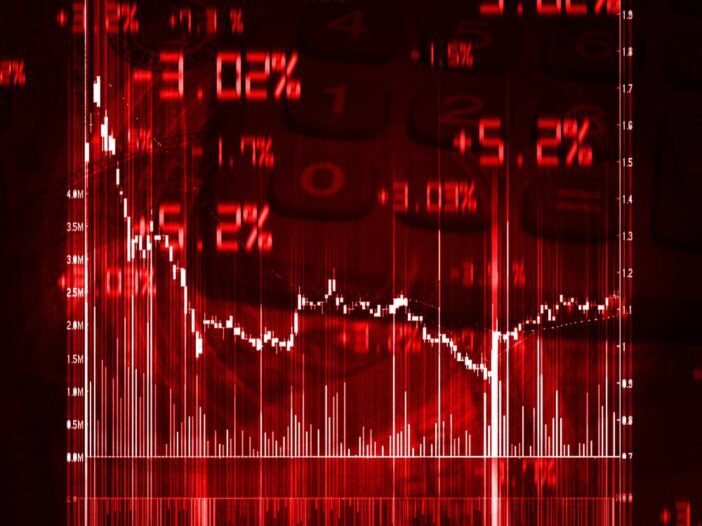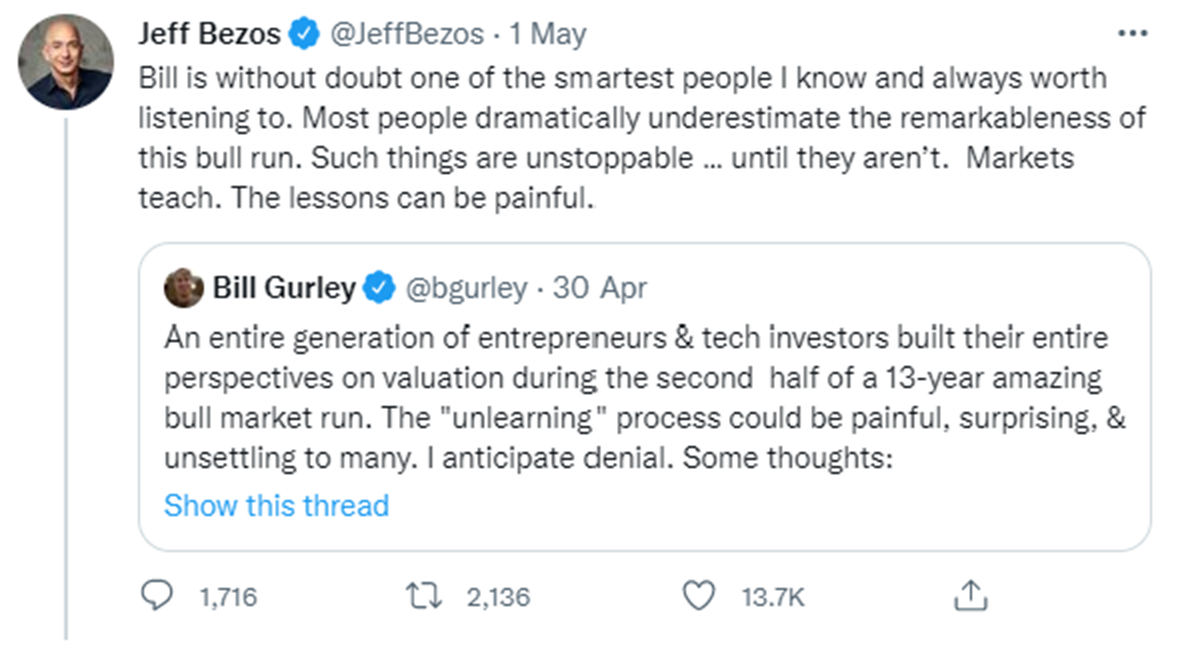In today’s Money Morning…growth funds take a hit…a lost decade for stocks?…distinguishing value from price…and much more…
For years, growth investing was seen as one of the best strategies for maximising gains.
At the very least, growth investing was preferred over value investing, with the latter seen as a performance laggard.
As a 2020 report from Research Affiliates noted:
‘Many investors are re-examining their exposure to value investing because of the extraordinary span of underperformance — from 2007 to mid-2020 and counting — relative to growth investing.
‘In that period, the standard high book-to-market minus low book-to-market (HML) factor based on the book-to-price ratio (B/P) of Fama and French (1993) experienced a drawdown of –55%. As of June 2020, the current drawdown is the largest drawdown observed since June 1963.’
The dominance of growth investing was such that in November 2020, The Economist ran a story arguing that value investing ‘is struggling to remain relevant’.
But stocks’ recent flirtation with a bear market is rejuvenating value.
Year-to-date, the S&P Global Pure Growth Index is down 26%.
At the same time, the S&P Global Pure Value Index is holding firm, up a modest 0.6%.
Nothing to brag about, but better than a 25% drawdown.
As chief investment officer at Argonaut Capital Barry Norris (trenchantly) put it:
‘It’s now dawning on people that there’s more to investing than handing out capital like lollipops at a school fete to anyone with an idea for flying taxis or carbon-free hot dogs.’
|
|
| Source: S&P Global |
So with interest rates rising and inflation crimping sales — what does the future hold for growth stocks?
Will markets settle for a new normal, where investors pay a lower premium for fast-growing — but as yet unprofitable — businesses than in the recent past?
Growth funds take a hit
In early May, as stocks continued to slide worldwide, Amazon founder Jeff Bezos took to Twitter to remind people of the ‘remarkableness’ of the recent bull run.
The bull run seemed unstoppable…until now. Bezos warned the lessons can be painful.
|
|
| Source: Twitter |
The lessons were painful for many hedge funds who rode the bull market to notch big gains by backing high-growth stocks only to be hit with big losses as the bull made way for the bear.
Chase Coleman’s famed Tiger Global hedge fund is down roughly 45% for the year.
In fact, the Financial Times reported that the fund was hit by losses of about US$17 billion, one of the biggest dollar declines for a hedge fund in history:
‘The run of poor performance means the firm — one of the world’s biggest hedge funds and a big investor in high-growth, speculative companies whose shares have tumbled since their pandemic peaks — has in four months erased about two-thirds of its gains since its launch in 2001, according to calculations by LCH Investments.’
Other prominent hedge funds like Viking Global and Coatue Management are down 9% and 15%, respectively.
Last week, Gabe Plotkin’s Melvin Capital announced it would close its funds and return cash to investors after the fund’s losses betting against meme stocks last year were compounded by souring bets on growth stocks this year.
And while not a hedge fund, Cathie Wood’s Ark Innovation fund — the poster child of investing in growth companies — is down more than 50% year-to-date.
|
|
| Source: Financial Times |
A lost decade for stocks?
Does the fall of growth stocks presage a barren period for stock investing?
Last week, the Wall Street Journal ran a gloomy feature titled ‘This Could Be a Lost Decade for Stocks’.
The feature argued that shares could ‘go nowhere for a while’ based on long-term valuations.
Alternatively, the market ‘could just get it over with and crash’.
It didn’t make for upbeat reading.
The reason shares could tread water for a while is because the recent bull market pushed prices so high that any further gains would be modest, even when you account for the current sell-off.
The article highlighted that the price investors were willing to pay for a dollar of earnings went from a multiple of 13-times to 23.6-times over the decade ending December 2021.
The long-term historical average is a multiple of around 15.
According to Jeremy Grantham — co-founder of asset manager GMO — if the price-earnings multiples revert to their long-run averages, the world’s benchmark S&P 500 would drop by another 40%.
This would take the index back to a level it first crossed five years ago.
Is all hope lost?
What should investors do now?
Can growth investing regain its lustre, or will we enter a decade where value outperforms growth?
Are we set for a new normal?
Speaking to the Financial Times, Michele Gesualdi — founder of Infinity Investment Partners — noted:
‘It is a new regime for markets. It’s going to be tougher to make money for traditional investors.’
Tougher, but not impossible.
Distinguishing value from price
Value investors often talk about a margin of safety. It is a buffer between value and price.
A healthy buffer renders an investment less risky.
But there’s something quite interesting about the margin of safety in turbulent times.
In bearish times, prices tend to diverge significantly from value.
As Jason Zweig wrote (emphasis added):
‘Because business value changes gradually, whereas price fluctuates explosively, the margin of safety often widens in times of turmoil—meaning that investing is safest precisely when it feels riskiest. Only those who can take advantage of this paradox can reach their fullest potential as investors.’
Counterintuitively, when the broader market undergoes a deep correction — or enters a bear market — the margin of safety improves.
Bear markets tend to affect good and bad stocks alike.
In the short term, that’s painful.
But it also means great businesses insulated by competitive advantage and still growing earnings are getting cheaper.
And therein lies the opportunity for brave investors who can take advantage of the paradox.
Now, someone else who thinks we are entering a new regime for markets is Jim Rickards.
In fact, Jim thinks the global order as a whole is undergoing what he is dubbing an axis shift.
Jim is a veteran strategist. Few market events have escaped either his firsthand experience or his wider learning.
Recently, Jim prepared an investment strategy for the big axis shift he sees coming.
To read about his ideas further, access Jim’s thoughts by clicking here.
Regards,
Kiryll Prakapenka,
For Money Morning




